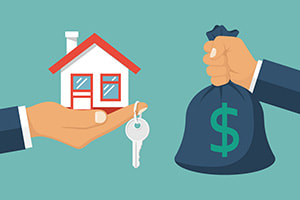 Mortgage rates are up and expected to keep climbing; this might lead to moderation in demand from homebuyers and a slight slowdown of home price growth. Despite this, economists with Freddie Mac believe the single-family housing market should remain stable throughout the year. According to Freddie Mac Chief Economist Sam Khater, "The combination of a large number of entry-level homebuyers facing a shortage of entry-level inventory of homes for sale should keep the housing market competitive." Home sales are expected to reach 6.9 million by the end of the year and climb to 7 million in 2023. Mortgage Moves The average 30-year fixed-rate mortgage (FRM) has climbed to just below 4%; the highest it's been since May 2019. In comparison, in 2021, the 30-year FRM was averaging just 3%. With rising mortgage rates, home price growth is expected to slow. In 2021, house price growth was 15.9%; this is forecasted to drop to 6.2% in 2022 and to 2.5% in 2023. Housing Affordability Rising mortgage rates directly impact home affordability. Monthly mortgage payments consist of a combination of principal loan amounts, taxes, insurance, and interest. The higher the interest rate, the higher a homeowner's monthly payments. As such, an increase in mortgage rates can hit the monthly budget of homeowners, as well as decrease the amount of house a homebuyer can afford. Talk to an Expert While it is always wise to keep an eye on mortgage rates, the fear of fluctuating rates shouldn't stand in the way of your dreams of home ownership. Talk to the experts. Understand your finances so you know what you can afford and so that you can make an informed decision on the purchase of a new home that fits within your budget.
0 Comments
 Three sales regions in the country reported monthly gains in home sales, while sales remained steady in the fourth region. Yet when comparing year-over-year sales, only one region saw an increase in home sales, while the other three recorded sales decreases. There was more unity across the country when comparing existing-home prices, however, as every region saw price gains. Median home prices were up 13.9% in November from a year earlier, reaching $310,800. This marked the 117th month in a row of year-over-year price increases—a new record. Yet this record might come to an end in 2022. According to Lawrence Yun, chief economist for the National Association of Realtors, both inflation and the pace of price appreciation is expected to slow over the coming year. This view was echoed by economists and housing experts at the NAR Real Estate Forecast Summit; the consensus prediction was that inflation would ease at a 4% rate, while home prices in 2022 would rise at a more moderate pace of 5.7%. Rising Mortgage Rates Yun believes recent buyers have been driven by a forecasted rise in mortgage rates. “Locking in a constant and firm mortgage payment motivated many consumers who grew weary of escalating rents over the last year.” While mortgage rates are expected to climb in the coming months, the increase is expected to be manageable. Yun expects the 30-year fixed mortgage rate to average 3.7% by the end of 2022, with the average commitment rate for the year hitting 3.11%. Inventory of Unsold Homes Down Again The consistent lack of supply that has hindered the housing market for years saw no improvement in November, with total housing inventory reaching 1.11 million units. This was down 9.8% from a month earlier and 13.3% from a year earlier, when there were 1.28 million homes on the market. At the current sales pace, November’s housing inventory would supply the market for just 2.1 months, a lower inventory than at the same time a month and year ago. “Supply-chain disruptions for building new homes and labor shortages have hindered bringing more inventory to the market,” according to Yun. The low levels of supply were a contributing factor to November’s record-setting home prices. Houses Selling Quickly Fewer first-time buyers were able to gain a foothold in the housing market in November; this group accounted for just 26% of all home purchases, down from 32% a year earlier. According to the NAR “2021 Profile of Home Buyers and Sellers,” the annual share of first-time buyers in 2021 was 34%. All-cash sales, meanwhile, were up, accounting for 24% of all purchases; in comparison, 20% of all transactions were all-cash in November 2020. The average property stayed on the market for just 18 days, three days less than a year earlier. Of all the homes sold in November 2021, 83% were available for less than one month. Regional Breakdown Northeast - Existing-home sales annual rate of 760,000; unchanged from October 2021 and a decrease of 11.6% from November 2020. The median sales price of $372,500 increased 4.7% from November 2020. Midwest - Existing-home sales annual rate of 1.52 million; an increase of 0.7% from October 2021 but a decrease of 0.7% from November 2020. The median sales price of $260,100 increased 9% from November 2020. South - Existing-home sales annual rate of 2.85 million; an increase of 2.9% from October 2021 and 1.1% from November 2020. The median sales price of $318,900 increased 18.4% from November 2020. West - Existing-home sales annual rate of 1.33 million; an increase of 2.3% from October 2021 but a decrease of 3.6% from November 2020. The median sales price of $507,200 increased 8.4% from November 2020. |
AuthorA variety of pertinent real estate topics and tips from various authors and contributors. Archives
December 2024
Categorieshow much home can i afford?*
|


